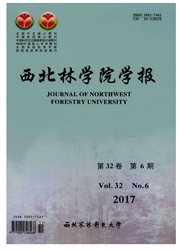

 中文摘要:
中文摘要:
在为到 2000 年 12 月 31 日的 1979 年 1 月 1 日的时期的亚洲的连续 22 年的模拟作为开车领域与 NCEP 分析 II 数据用地区性的综合环境模型系统(RIEMS 2.0 ) 被进行。模型过程与模型的能力的焦点包括状态包裹(蝙蝠 1e ) , Grell 积云 parameterization,和修改放射包装的表面物理(CCM3 ) 在东亚上模仿夏天季风。分析结果证明(1 ) RIEMS 复制空间模式和表面温度的季节的周期很好。当地区性平均时,夏天平均数温度偏爱在 1 2 ° C 以内。(2 ) 为降水,模型复制东亚夏天季风雨带的空间模式,和时间的进化很好与更快速的转变分开的稳定的阶段,被复制。RIEMS 2.0 模仿的雨带比由 RIEMS 1.0 接近观察。(3 ) RIEMS 2.0 能相当复制大规模发行量。
 英文摘要:
英文摘要:
A continuous 22-year simulation in Asia for the period of 1 January 1979 to 31 December 2000 was conducted using the Regional Integrated Environmental Model System (RIEMS 2.0) with NCEP Reanalysis II data as the driving fields. The model processes include surface physics state package (BATS le), a Grell cumulus parameterization, and a modified radiation package (CCM3) with the focus on the ability of the model to simulate the summer monsoon over East Asia. The analysis results show that (1) RIEMS reproduces well the spatial pattern and the seasonal cycle of surface temperature. When regionally averaged, the summer mean temperature biases are within 1-2℃(2) For precipitation, the model reproduces well the spatial pattern, and temporal evolution of the East Asia summer monsoon rain belt, with steady phases separated by more rapid transitions, is reproduced. The rain belt simulated by RIEMS 2.0 is closer to observation than by RIEMS 1.0. (3) RIEMS 2.0 can reasonably reproduce the large-scale circulation.
 同期刊论文项目
同期刊论文项目
 同项目期刊论文
同项目期刊论文
 期刊信息
期刊信息
